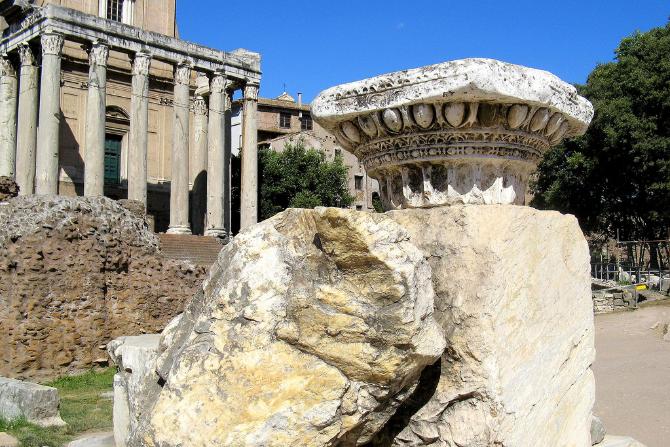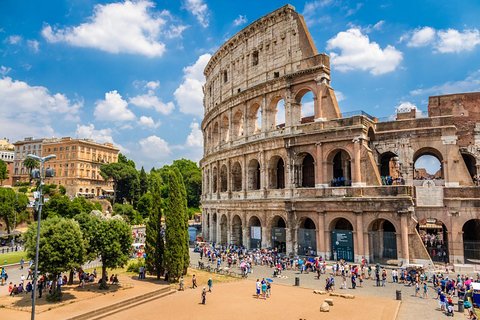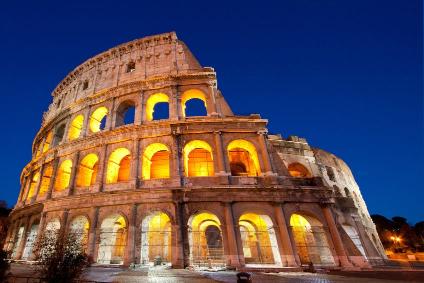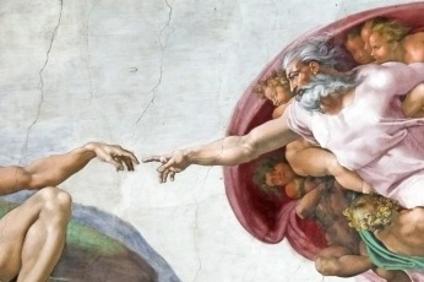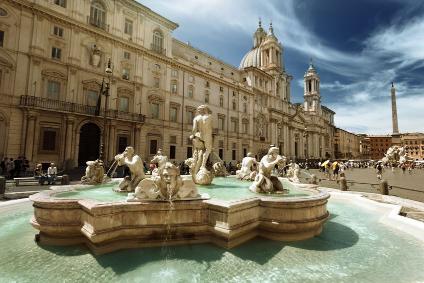The Roman Forum is located in a valley between Piazza Venezia and the Colosseum, between the Palatine Hill, Capitoline Hill and Esquiline Hill. The area was originally marshlands which were cleared with an ingenious system during the reign of the last Etruscan kings (until 509BC). The Cloaca Maxima canal was constructed to drain off the land into the Tiber River. Once the area was inhabitable it began to develop into an urban center and for more than 1000 years this was the most important part of the city. The area's central square, called Foro, was where the Romans would gather for meetings, trials and trade, the Forum was the center of life in Ancient Rome. Also in the Forum there were markets, temples, government buildings, stores and inns.
Several structures remain in the Forum from different periods in history. The 70 foot high Arch of Septimius Severus, (203AD) to commemorate the victory over the Parthians. It is adorned with intricate bas-reliefs. Statues remain from the House of the Vestal Virgins (Atrium Vestae), which was a 3 story, 50 room residence which accommodated the virgin priestesses. Several of the original 20 Corinthian columns from the Temple of Vesta remain, built on a podium 49 feet in diameter. The Curia Julia was where the Senate would gather and although there were several locations over the course of Roman history, the Curia which remains was constructed under Diocletian in 283AD.
The Rostra was a platform where speeches were made. The present platform was commissioned by Caesar and made out of marble, it measured 79 feet wide and 39 feet deep.

